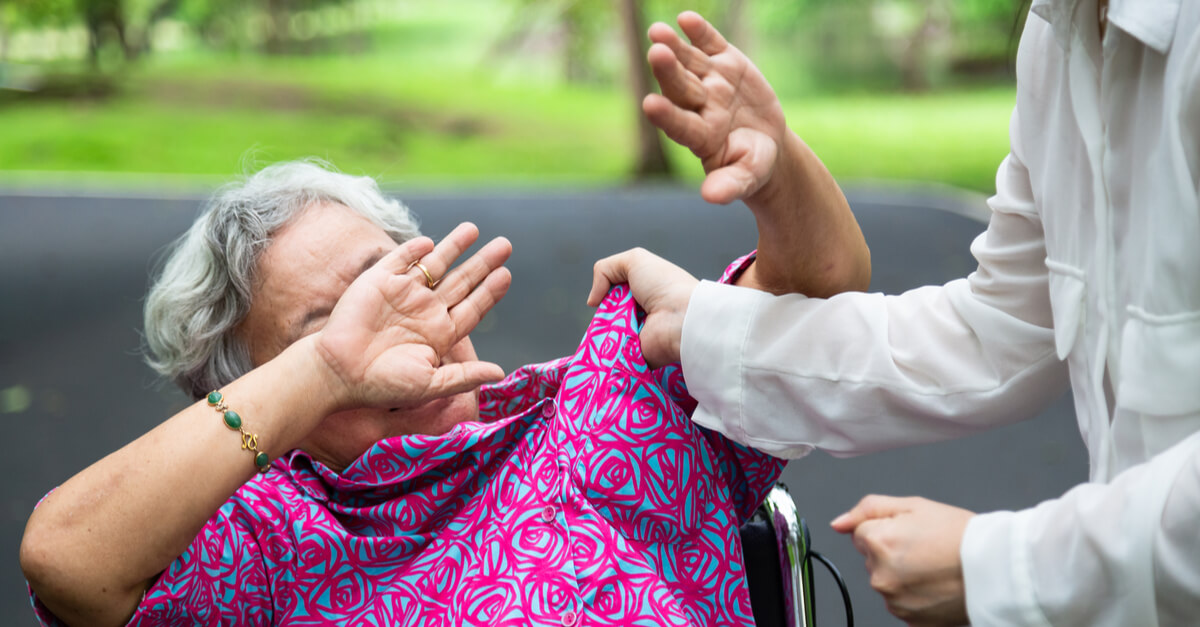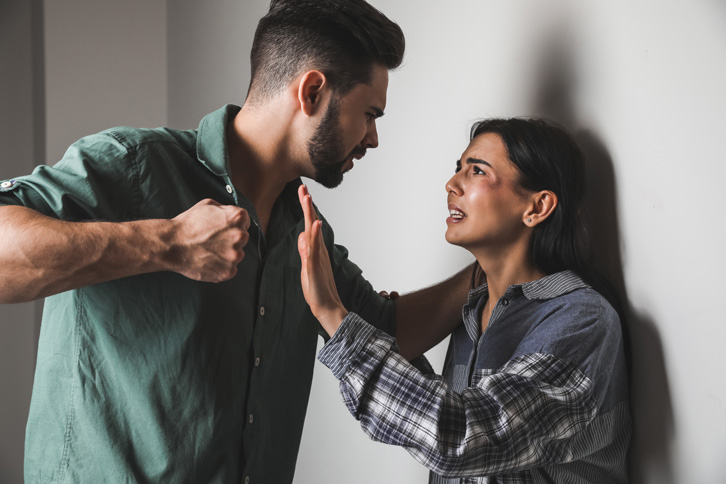Victims of physical abuse may experience negative effects on their physical, mental, and emotional health for a long time after the abuse has stopped. Whether it’s happening in a child-parent relationship, an elderly-caregiver relationship, or a romantic union, friends and family members should be prepared to detect the indicators of physical abuse.
Friends and family members can do more to aid those who have been victims of physical abuse if they are aware of the warning signals and take action.
This resource explains how to see the signs of physical abuse in many types of relationships, such as those involving children, the elderly, spouses, and intimate partners. Find out the warning signs of abuse, how to properly intervene, and where to get help for victims and survivors.
Understanding Physical Abuse

1. Definition and Examples of Physical Abuse
To physically damage or injure another person is an example of physical abuse. Caretakers, family members, romantic partners, and complete strangers are all capable of doing this. Abuse can be sporadic or persistent.
When someone is physically abused, they may be struck, slapped, kicked, bit, suffocated, burned, or even burned with hot objects. To further prevent the person from moving, restraints like ropes or chains may be used.
Bruises, wounds, fractured bones, internal injuries, and head trauma are just some of the injuries that can result from physical abuse. Long-term physical and mental health issues might result, including PTSD, anxiety, sadness, and chronic pain (PTSD).
2. Statistics on Physical Abuse
Everyone, regardless of age or gender, is susceptible to experiencing physical abuse. Almost one-third of women around the world have been victims of physical or sexual violence, per data compiled by the World Health Organization. An estimated 10 million adults in the United States are victims of physical abuse each year.
Physical abuse is another risk for children. Almost 1 in 7 American children have been victims of abuse or neglect in the past year, according to complaints received by child protective services, which total over 4 million annually.
3. Common Myths and Misconceptions About Physical Abuse
Many people have false beliefs about physical abuse, which can make it hard for victims to seek help. The following are examples of widespread misconceptions:
- Physical abuse only happens to women: Women are more likely to be the victims of physical abuse, although men can still be abused.
- Physical abuse only happens in romantic relationships: Abuse of any kind is unacceptable in any connection, and this includes friendships and families.
- Physical abuse is always the result of anger: Abuse of any kind, especially physical, is rarely done out of pure rage but rather as a means of power and intimidation.
- People who experience physical abuse are weak: Physical abuse is not selective and can happen to anyone, regardless of size, strength, or temperament.
- Physical abuse is a private matter: Reporting incidents of physical abuse to the police helps ensure that the offender faces consequences and that the victim receives the support they need.
If you or someone you know is experiencing physical abuse, you must take action and get treatment. Nobody should ever tolerate physical abuse, but victims can find the protection and care they need if they know where to look.
Signs of Physical Abuse
Physical Signs of Abuse
- Bruises and other injuries: Bruises in various stages of healing are a common sign of physical abuse, and they often appear in places like the neck, arms, back, and buttocks that are not commonly harmed by accident. Weals, cuts, and abrasions are also possible outcomes of injuries.
- Burns: Signs of physical abuse often include bruises that are still healing, especially on areas of the body like the neck, arms, back, and buttocks that are difficult to injure accidentally. It is also possible for injuries to result in weals, cuts, or abrasions.
- Broken Bones: Bruises that are still healing are a common indicator of physical abuse, especially when they appear on vulnerable body parts like the neck, arms, back, and buttocks. Weals, cuts, and abrasions are also possible outcomes of injuries.
- Other physical symptoms: Fresh bruises, especially on sensitive areas like the neck, arms, back, and buttocks, are common signs of physical abuse. It is also possible for injuries to result in weals, cuts, or abrasions.
Behavioral Signs of Abuse
- Fear or anxiety: A victim of physical abuse may exhibit extreme nervousness or panic whenever they are near their abuser or in new social situations. They can have trouble sleeping, be overly cautious, or experience panic episodes.
- Isolation or withdrawal: Those who have suffered physical abuse may withdraw from their social circles, shunning events they once enjoyed. They may also avoid activities where they must interact with others physically, such as sports and dance.
- Changes in mood or behavior: Mood swings, despair, and anxiety are just some of the mental and behavioral changes that can result from physical abuse. Anger, irritability, and withdrawal are all symptoms that victims may experience.
- Other behavioral symptoms: Abuse of any kind, whether verbal, emotional, or physical, can lead to a variety of different behavioral signs.
Understanding the Signs of Abusive Relationships
1. Child Abuse
:max_bytes(150000):strip_icc()/482187051-56a258623df78cf7727492b4.jpg)
Abuse of children can take various forms, including neglect, emotional abuse, sexual abuse, and physical abuse. Unexpected bruises, welts, or other injuries, as well as a child’s apparent dread of the caretaker, might be indicators of physical abuse. Other symptoms of sexual abuse include regression in behavior or language, difficulties walking or sitting, and abnormal sexual practices.
The effects of emotional abuse on a kid can include low self-esteem, despair, and anxiety. Constant filthiness or malnutrition are two symptoms of neglect, as is a lack of necessities such as food, clothing, and medical attention.
2. Elder Abuse

Neglect, financial exploitation, sexual abuse, mental abuse, and physical violence are all manifestations of elder abuse. Bruises, fractured bones, or bedsores are all physical indicators of physical abuse, and the elderly person may also exhibit afraid or nervous behavior. The older person may be unhappy, worried, or withdrawn, and verbal abuse, threats, or intimidation are all possible indicators of emotional abuse.
The elderly person’s financial situation may alter unexpectedly for several reasons, including the misuse of credit cards, theft of personal goods, or the use of forged documents. The old person may be constantly unclean or emaciated due to neglectful caretakers who fail to provide them with enough food, clothing, or medical treatment.
3. Domestic Violence

One definition of domestic violence is a pattern of behavior in which one partner attempts to exert power and control over the other through physical or emotional abuse. Unexpected injuries, bruises, or broken bones, as well as extreme nervousness or terror when near the abusive partner, can all be indicators of domestic abuse.
The victim of emotional abuse may withdraw socially, exhibit depression, or experience anxiety as a result of verbal abuse, criticism, or isolation. Abusers of the financially vulnerable may exert control over their victims, withhold funds, or even prevent them from working. Signs of trauma or anxiety are common among victims of sexual abuse, which can take the form of rape or other forms of non-consensual sexual intercourse.
4. Dating Violence

Violence in a dating relationship is quite similar to domestic violence. Physical injuries, such as bruises or broken bones, and mental abuse, such as verbal abuse or manipulation, are both possible indicators of dating violence.
The victim may withdraw from their social circle and appear nervous or worried while they are with the abuser. The victim of dating violence may show signs of distress or anxiety, and the abuser may use sexual or financial means to exert power and control.
How to Help
When to Call the Police
It’s crucial to protect the victim’s health and safety if you have any reason to believe they’ve been abused. One option is to contact the local child or adult protective services organization to voice your concerns. If you need help, you can also contact a group in your area that deals with domestic violence or sexual assault.
Resources for Victims and Survivors
Shelters, hotlines (800-799-7233), and support groups are just some of the options available to abuse victims and survivors. Emergency shelter, counseling, legal aid, and financial aid are just some of the services that domestic violence and sexual assault organizations in your region may be able to connect you with.
How to Be There for Someone Going Through Abuse
One must approach a victim of abuse with compassion and understanding. Assure them of your trust and backing, and offer to point them in the direction of useful tools and assistance. Their independence and choices should be respected, and they should not be coerced into doing anything they feel uncomfortable with.
Tips for Intervening Safely
Precautions must be taken to ensure both your own and the victim’s safety while intervening in cases of abuse. Call 911 or your local emergency number if you are a witness to an attack or other violent act. You should proceed with care and consider contacting a local agency or organization for help on how to intervene safely if you suspect abuse but are not witnessing an urgent emergency.
Frequently Ask Questions
Bruises, scrapes, burns, fractured bones, and other injuries are all possible outward manifestations of abuse.
Fear, anxiety, isolation, withdrawal, mood swings, and other changes in behavior can all be indicators of abuse.
To protect someone who may be abused, act. This may include reporting your concerns to a local agency like child protective services or adult protective services or contacting a local domestic violence or sexual assault organization for help.
Abuse victims have shelters, hotlines, and support groups. Local domestic violence or sexual assault organizations can provide information on emergency shelters, counseling, legal aid, and financial help.
It’s crucial to treat abuse victims with understanding. Let them know you believe and support them and offer to help them access resources and services. It’s crucial to respect their liberty and not force them to do anything they don’t want to.



